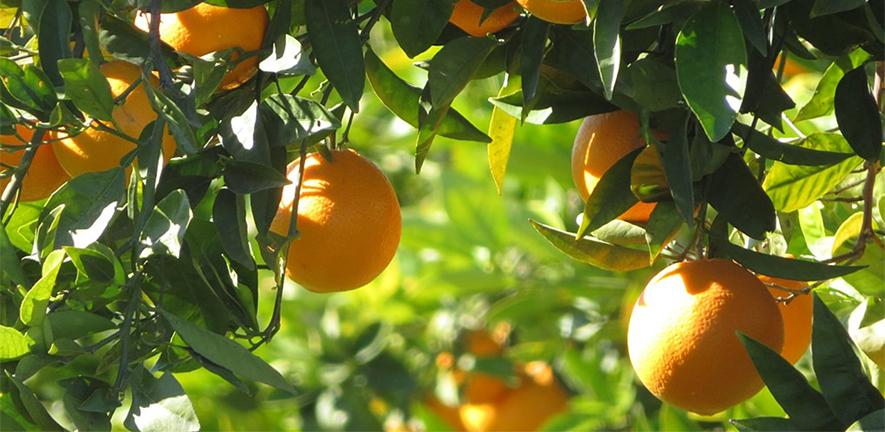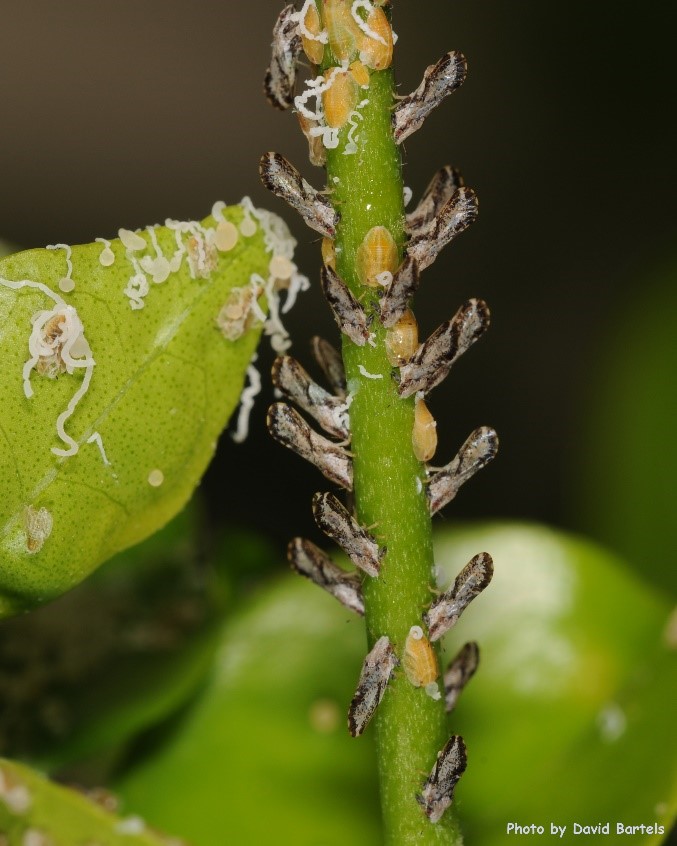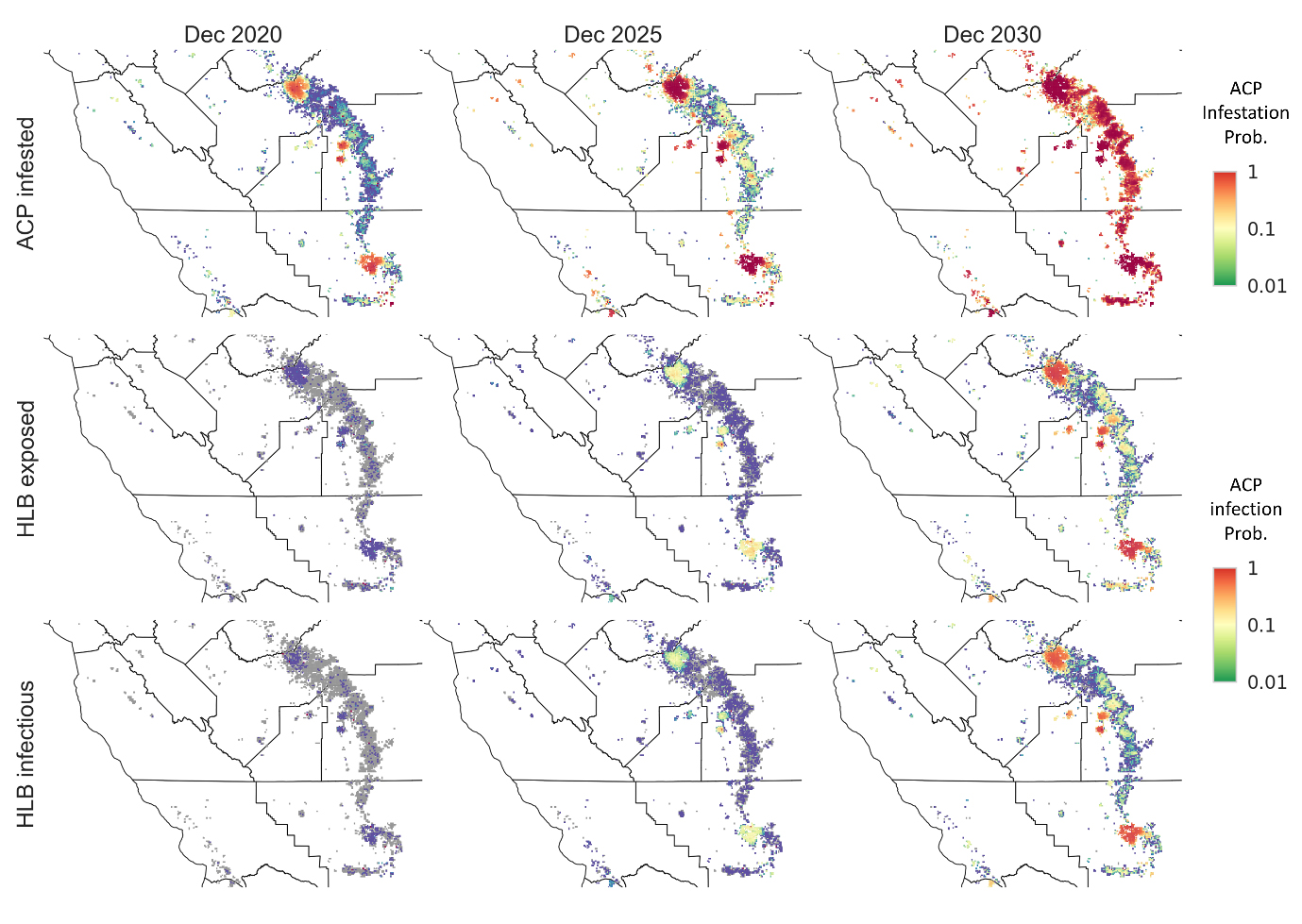
Submitted by Anonymous on Mon, 17/07/2023 - 10:36
Modelling the spread and mitigation of an emerging vector-borne pathogen: citrus greening in the U.S.A.
Citrus are one of the most popular classes of fruits with an estimated 75 million metric tons consumed globally each year, of which 70% is grown in Brazil, China and U.S.A. One of the most serious threats to citrus production world-wide is citrus greening, which is also known as Huanglongbing disease. The disease is caused by a bacterium (genus Candidatus Liberibacter) invading the phloem of citrus trees. The disease is transmitted by the Asian citrus psyllid (Diaphorina citri), a small invasive insect that feeds and lays eggs on the developing flush shoots in citrus.
Asian citrus psyllid was first found in Florida, USA in 1998. This was followed by the detection of the Citrus greening pathogen in 2005 which rapidly spread through commercial and residential citrus trees across the State. Both the insect and disease have subsequently been detected and are spreading in the two other main citrus producing states, Texas and California. Both federal and state agencies in cooperation with the citrus industry and growers are working to slow or halt the spread of this devastating disease.
The Epidemiology and Modelling Group are a research team with over a decade of experience developing predictive models for understanding long-distance spatial and temporal movement of crop pests and diseases. Models for predicting the risk of invasive pests and diseases as they move across landscapes crucially require reliable surveillance data to fit models successfully to new regions where crops are at risk. These fundamental data sets are not always available in areas adjacent to locations already devastated by major epidemics resulting in loss of yields.
The team worked with collaborators at the Animal and Plant Health Inspection Service, USDA to develop and test a new model to address the expanding distribution of citrus greening across southern states of north America. They used survey data from Texas, a state already impacted, to identify effective strategies for managing the disease. They showed the extent to which the model parameters could be transferred and tested in two citrus-growing areas at risk; southern California and California’s central valley.
The figure above shows distribution maps predicting the potential spread of both insect vector (Asian citrus psyllid) and Huanglongbing disease (citrus greening) moving across the Central Valley, up to 2030. These assumptions are made using transferable parameters from Texas and adjusting for climatic conditions in the Central Valley region.
The model framework is designed to be flexible to account for multiple sources of infection and adjustable to simulate the outcome of a range of pest management options, which help in the effort to slow the spread of the insect and disease. These transferable models are vital to support famer’s decision-making between crop protection options, as well as shaping regulatory and operational policies for emerging large-scale outbreaks in new citrus-growing regions.
Read the paper
Nguyen, V.A., Bartels, D.W., Gilligan, C.A. 2023. Modelling the spread and mitigation of an emerging vector-borne pathogen: Citrus greening in the U.S. PLoS Comput. Biol. 19(6): e1010156. https://doi.org/10.1371/journal.pcbi.1010156
Written by Alison Scott-Brown, Epidemiology and Modelling Group
This page top and front page slider photo from https://commons.wikimedia.org/wiki/File:Citrus_orchards_near_Sagunto_07.jpg


